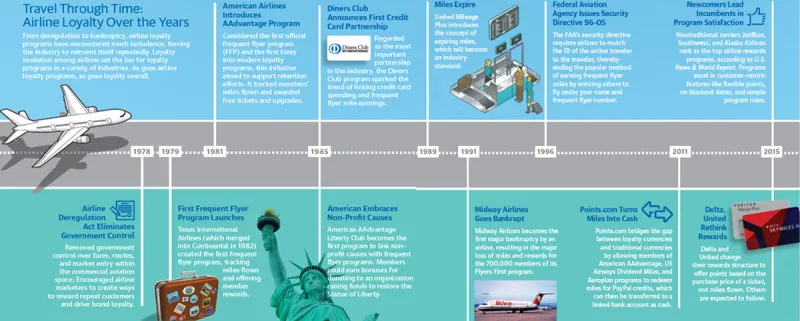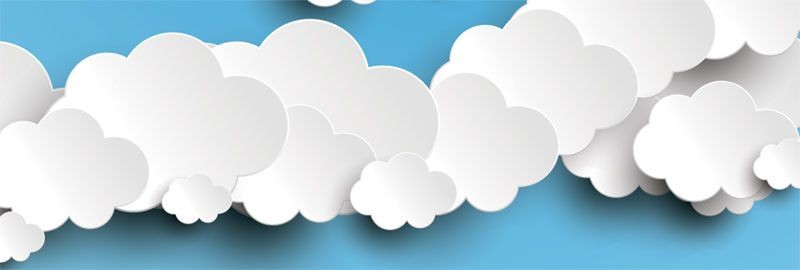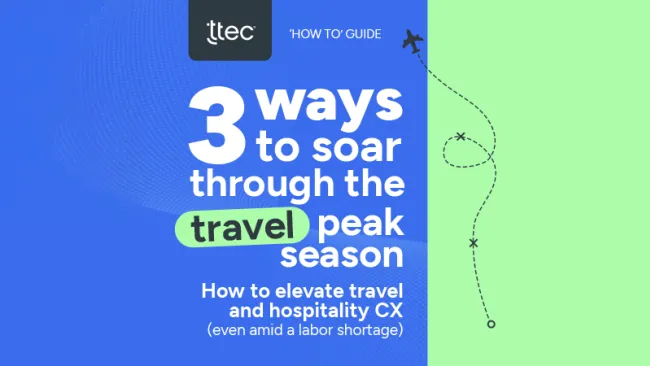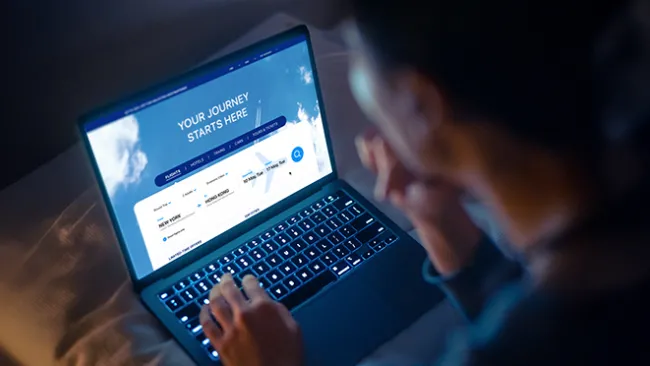The airline industry is considered the birthplace of the modern loyalty points program. After the launch of frequent flier programs like American Airlines’ AAdvantage, other industries quickly followed its lead to track individual usage, monitor behaviors by offering points, and reward customers for their activity with products and services in an effort to build loyalty.
Yet, while the airline industry has been at the forefront of loyalty innovation, it now often lacks the zest that once drove such initiatives forward. In the 1980s, frequent flyer programs were designed to encourage and reward recurrent travel. Industry leaders, however, now recognize that loyalty will likely falter or remain stagnant without an enhanced focus on customer engagement.
In recent years, airline loyalty has dwindled. The 2015 Colloquy Loyalty Census notes that, while said programs still garner 355.9 million members, this number dropped 4 percent between 2012 and 2014. From carrier consolidation to competitive online travel sites, loyalty programs no longer hold the same weight with consumers, as they are now motivated by price and efficiency.
Robert Passikoff, Ph.D., founder and president of Brand Keys, emphasizes that because it’s exceedingly easy for travelers to sign up for loyalty programs in today’s technology-driven ecosystem, these initiatives no longer serve as competitive differentiators within the loyalty space. Looking back, frequent flyer programs evolved from an era of deregulation, allowing airlines to connect with and incentivize travelers in ways they never could before in an effort to boost revenue. But, according to Passikoff, within today’s current ecosystem, no single carrier leads the way for innovation. Consumer expectations continue to grow with rapid speed, widening the divide between what they want and what airlines deliver.

Moving forward, airlines must close the gap between consumer values and brand offerings if they hope to cultivate increased engagement. To regain their position as loyalty leaders, airlines must realign their strategies to correlate with consumer behaviors and brand perception, and innovate with real-time interactions through new channels.
Successful brands will reengineer the customer engagement process as it pertains to their unique offering, Passikoff adds. Some brands are already doing it—JetBlue recently won the FlightGlobal Loyalty 2015 Technology award for its Badges integrated gamification platform. Badges members earn points and badges for using social media and sharing JetBlue experiences with others, which are applied to their rewards program balance. When members interact with the Badges platform, JetBlue tracks detailed behavior analytics, “developing rich user profiles enabling JetBlue to put a dollar value on each person interacting with Badges,” according to a statement from FlightGlobal.
Each brand will need to determine how well they currently meet customer expectations and what they can do to exceed these individuals’ perception of the ideal airline experience.

















